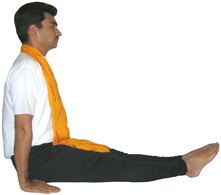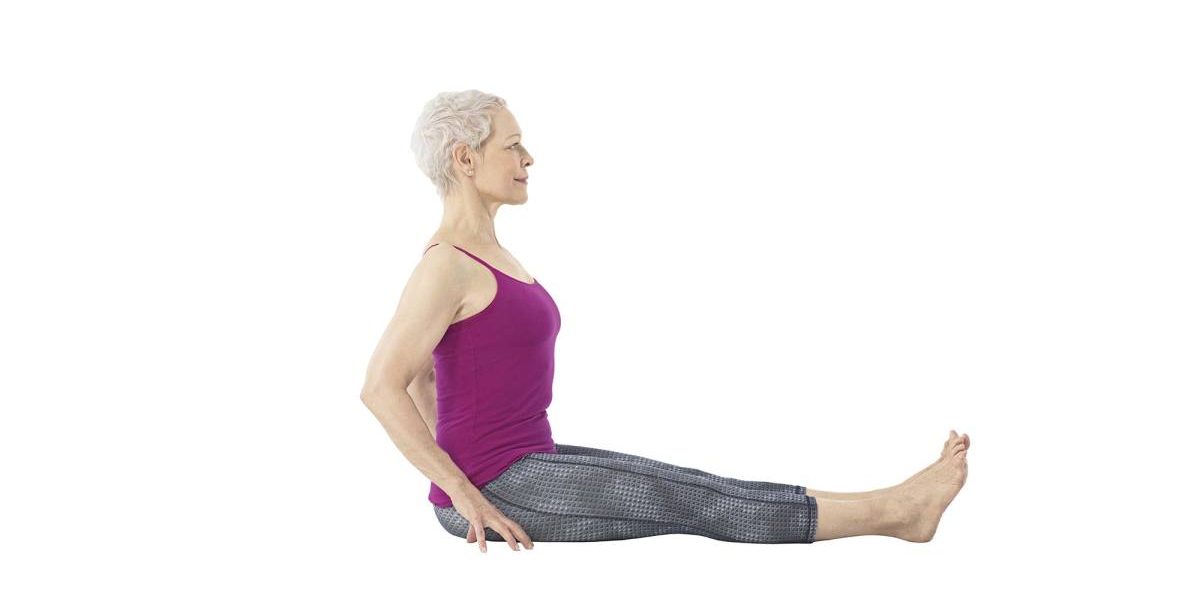Other names
Staff Pose, Dundasana, Dunda Asana, Dund Posture, dand Asan,

Description
Dandasana is the simplest form of sitting position on which many other asanas are based. Sit with your legs straight and feet together and place the hands on the ground on either side of the body with fingers pointing forward. Make sure that you breathe normally and have your eyes shut for concentration. It is advisable to sit in this posture for a little time before practicing other asanas based on Dandasana.
How to reach the stretch
- Start from a seated position, extend the legs straight out in front of you with your hands behind your hips and your fingers pointed away.
- Press the hip bones down and reach the crown of your head up to lengthen the spine.
- Drop the shoulders down and back and press the chest forward.
- Use the arms to support the chest open and the spine straight.
- Press the heels away from you and pull the toes towards your head.
- Breathe and hold for 3-6 breaths.
How to release the stretch
- To release, soften your throat and neck, and feel your head softly lifting off the top of your spine.
- Breathe comfortably and smoothly through your nose.
- Keep your eyes, jaw, and hearing relaxed.
Benefits
- It relaxes a person’s body and mind when over strained and exhausted.
- It also prepares a person for doing other asanas.
- Staff posture lengthens and realigns the spine, gently stretches the backs of the legs, opens the chest and stimulates the respiratory and reproductive systems.
Caution
- Heels should not lift off the ground while doing this asana.
- If you can not sit up with a straight spine then a blanket or cushion under the back part of your buttocks to help rotate the pelvis forward and by doing this you also will have a straight spine.


